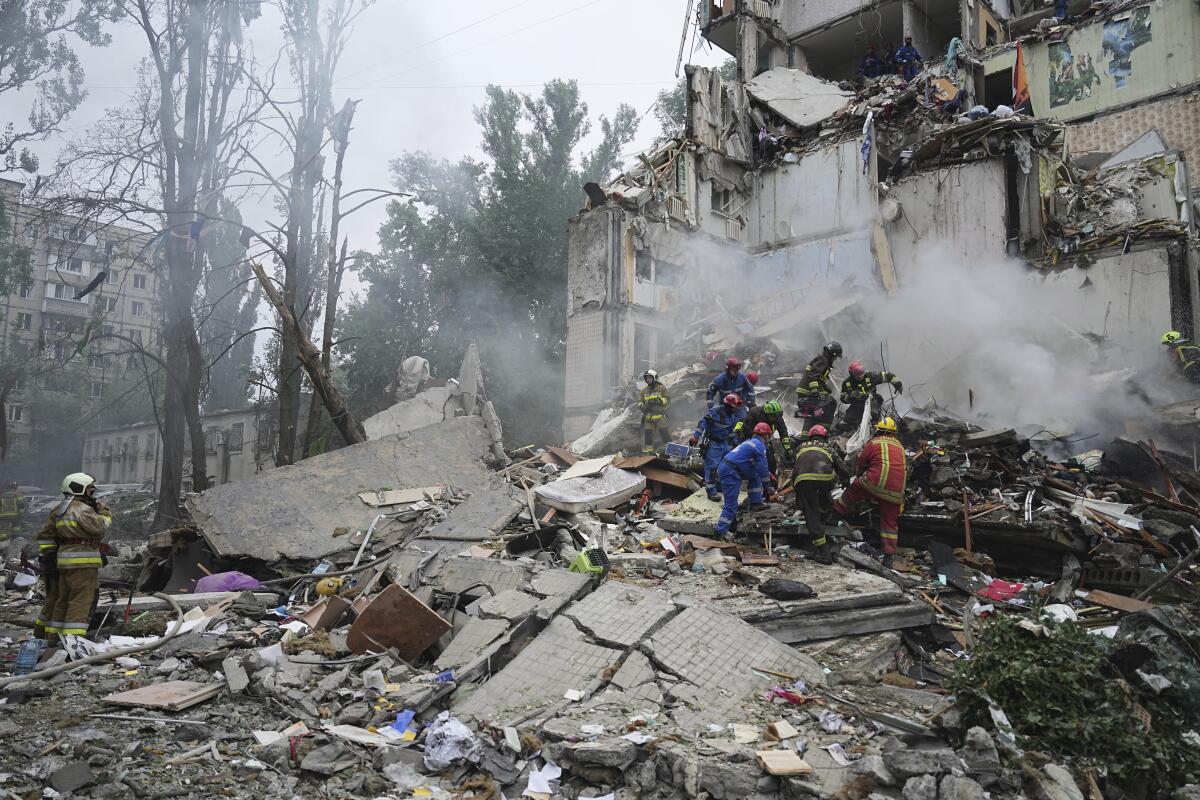Recent overnight aerial assaults on a major European capital have unleashed widespread devastation, resulting in a tragic loss of life and a significant number of injuries. Emergency services have been tirelessly working through the rubble, highlighting the immense humanitarian impact of these escalating events. The comprehensive nature of the damage underscores a deepening crisis impacting civilian populations.
The devastating urban assault claimed the lives of at least 13 individuals, including a six-year-old child, while more than 130 others sustained injuries. Among the wounded, 14 were children, including an infant merely five months old. This particular incident marks an alarming surge in civilian casualties within a single strike on the city since the onset of intensified aerial activity, as documented by public records.
A significant section of a nine-story residential building bore the brunt of the assault, leading to a partial collapse. Emergency response teams immediately mobilized, commencing urgent searches for individuals trapped beneath the debris. Their relentless efforts are crucial in these dire circumstances, reflecting the community’s desperate hope for survivors.
The assailants launched a considerable number of aerial devices overnight, including hundreds of various drones and several cruise missiles. Defensive systems successfully intercepted and neutralized a majority of these incoming threats, preventing even greater catastrophe. Despite these protective measures, a notable number of projectiles managed to bypass defenses, striking their intended targets.
Further reports confirmed that forces also targeted a five-story residential structure in an eastern regional city. This separate strike resulted in one fatality and injured at least 11 additional individuals, extending the scope of the widespread destruction beyond the capital. The coordinated nature of these attacks highlights a broad targeting strategy.
Within the capital, over two dozen distinct locations were impacted by the assaults, with particular intensity observed in two major districts. The extensive damage encompassed more than a hundred structures, including private residences, educational institutions, healthcare facilities, and academic centers. The sheer scale of destruction points to a deliberate campaign.
Concurrently, reports emerged of a drone incident causing a fire at an industrial complex in a neighboring region, though initial accounts indicated no casualties. Separately, disruptions to local railway infrastructure were reported in another adjacent area following the wreckage of aerial vehicles. These incidents underscore the reciprocal nature of the current tensions.
Amidst these developments, one of the involved forces asserted complete control over a strategically important urban area located in an eastern region that has been a focal point of contention for nearly 18 months. This locality, situated on an elevated position, offers a commanding view crucial for further advancements, forming a key part of the region’s broader defenses.
Recent assessments indicated ongoing skirmishes within the newly controlled area, with several engagements reported over the past 24 hours, suggesting persistent resistance. Meanwhile, international diplomatic efforts continue, with global leaders issuing deadlines for progress on peace initiatives, aiming to de-escalate the volatile situation and prevent further territorial gains before punitive measures are considered. The international community remains watchful of international stability.




Leave a Reply